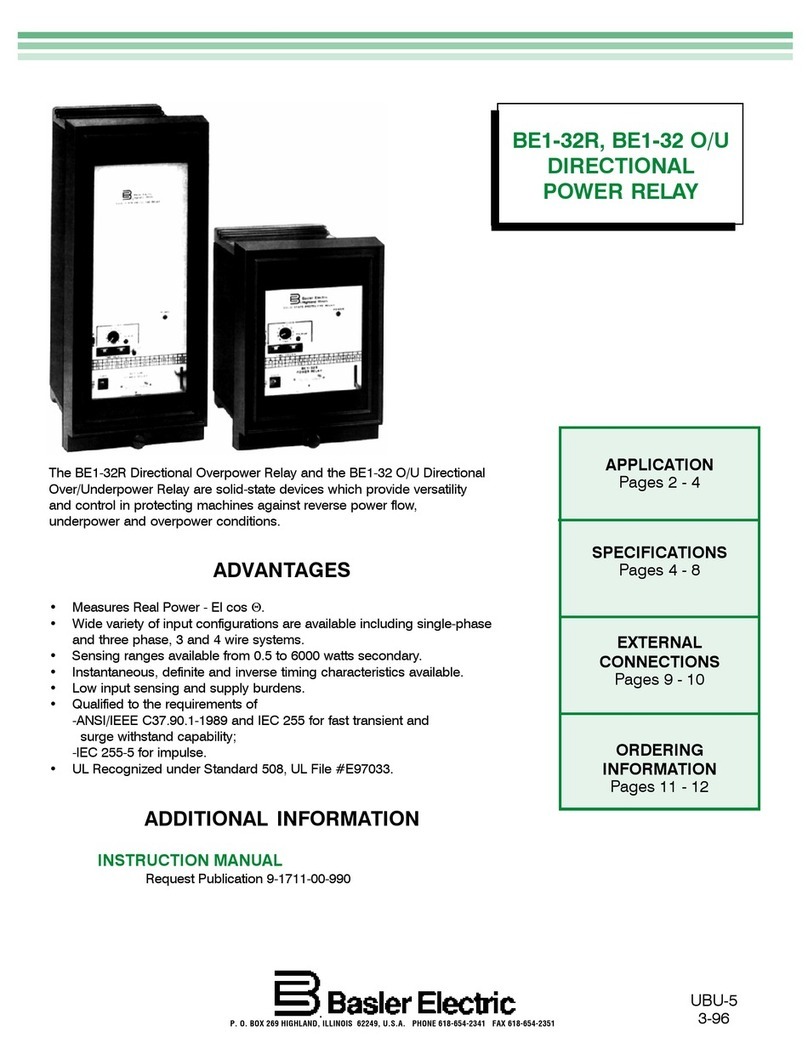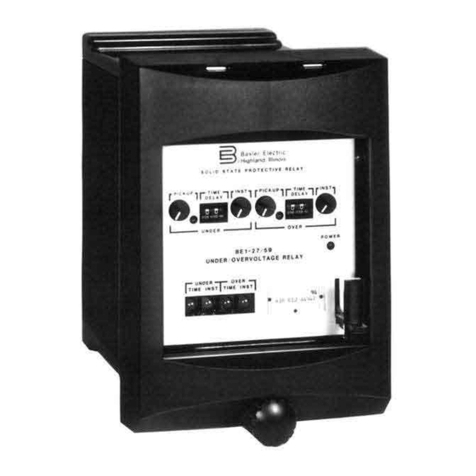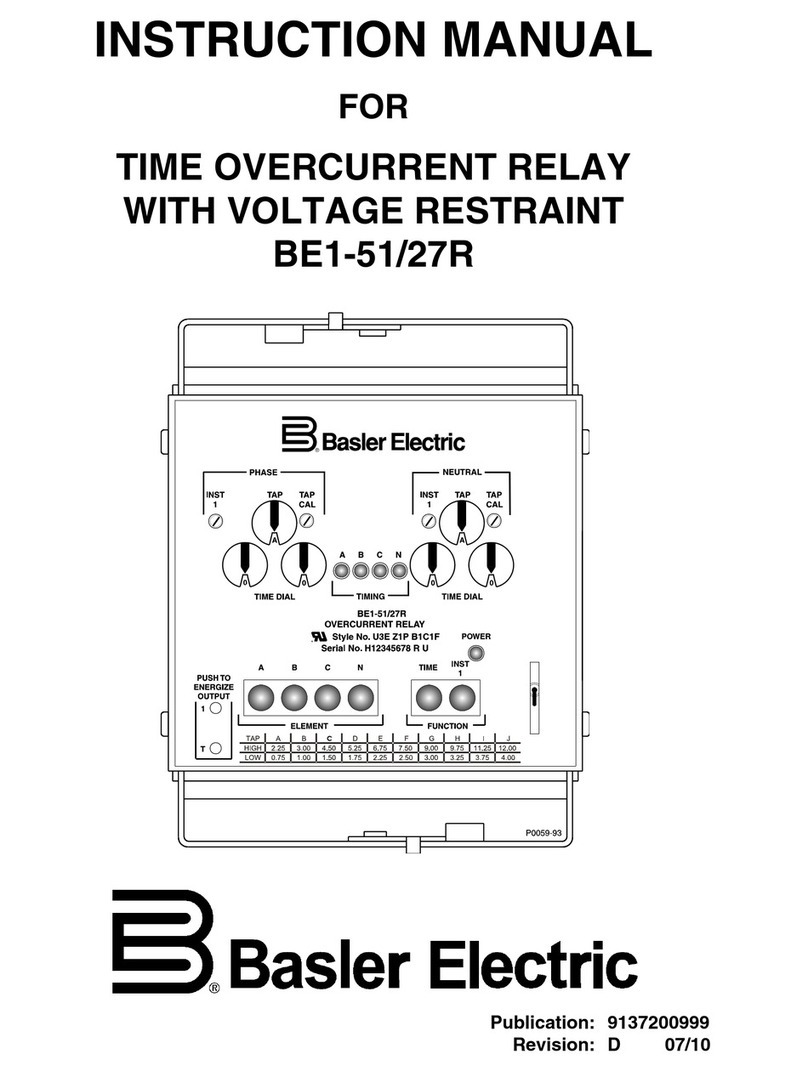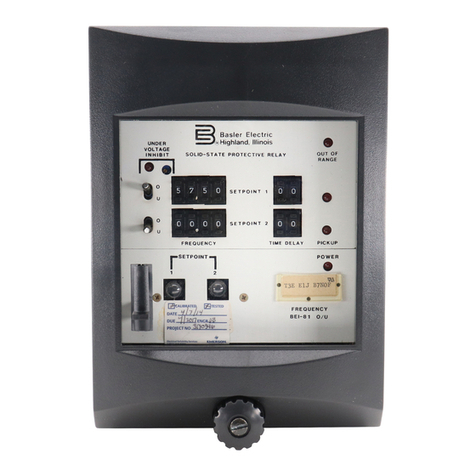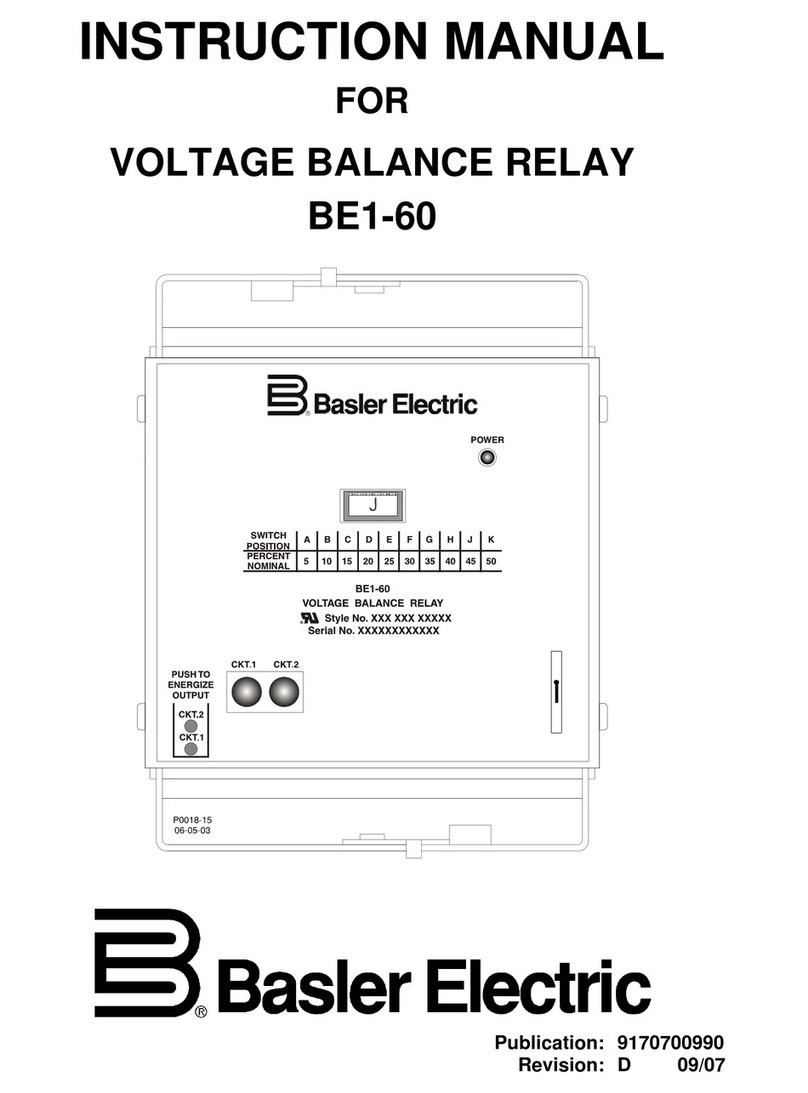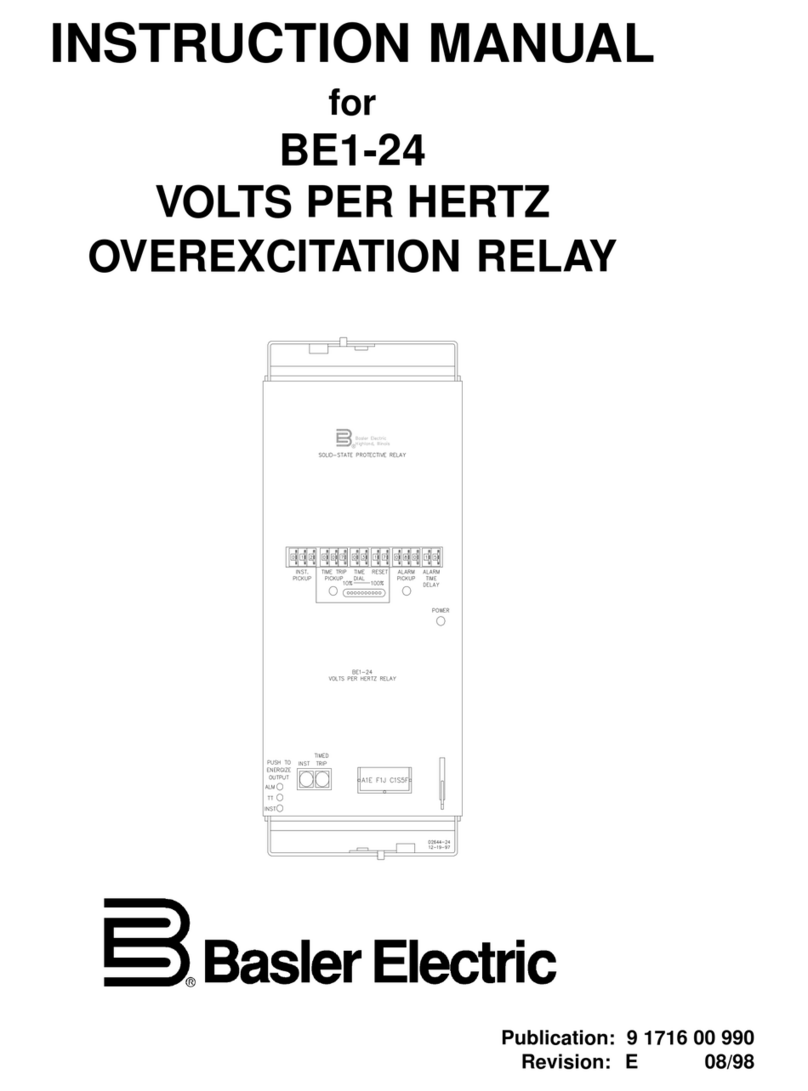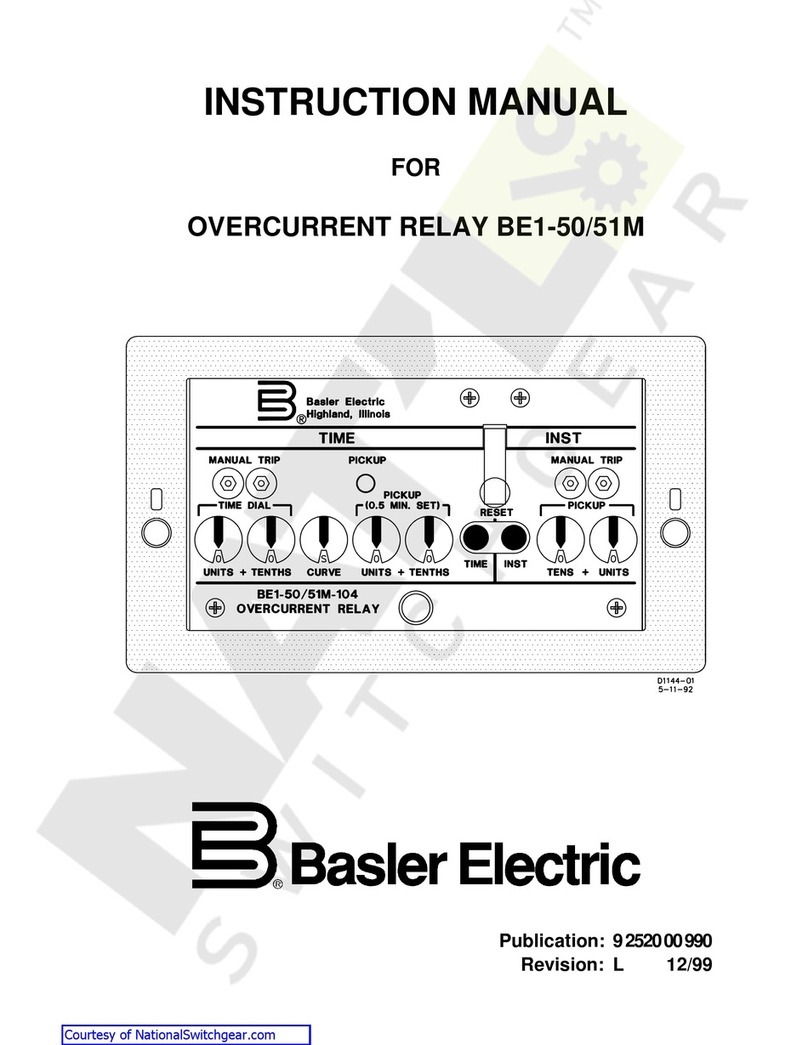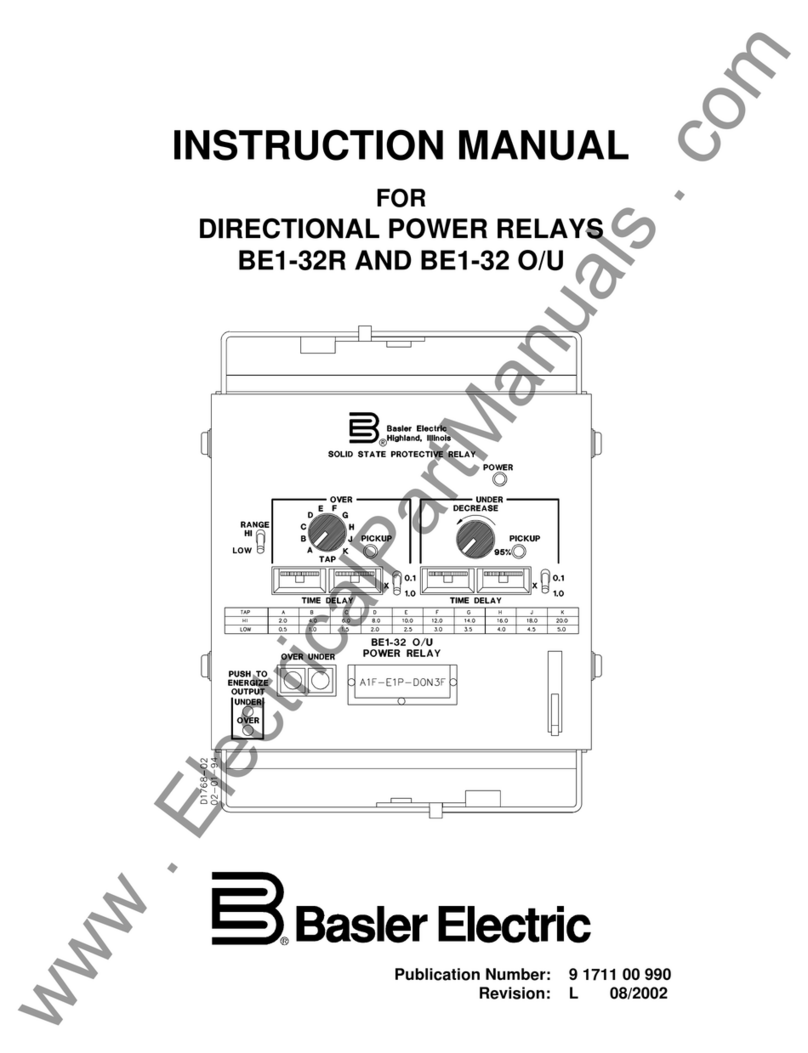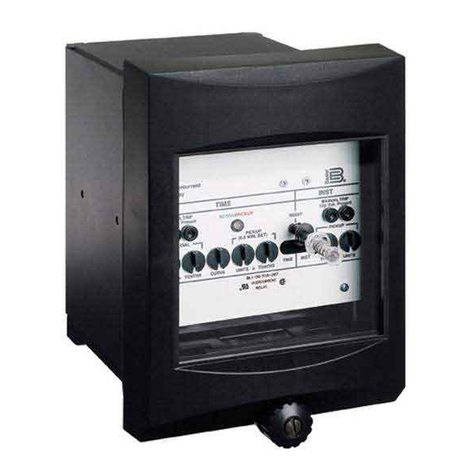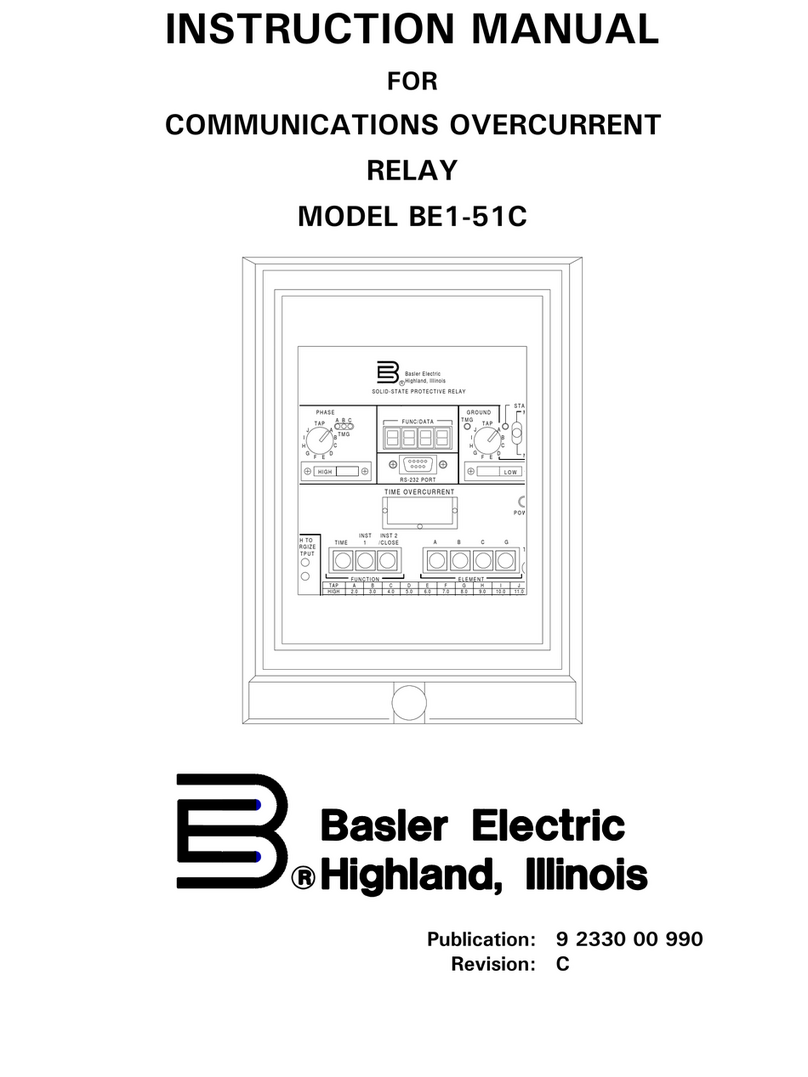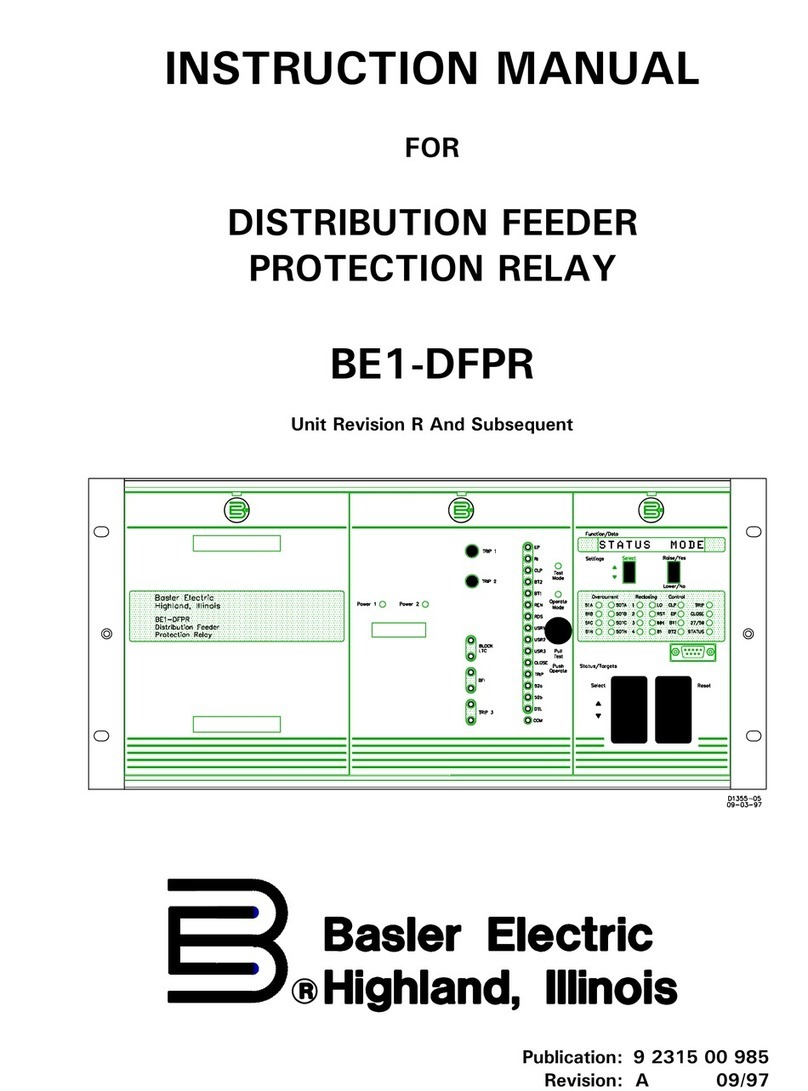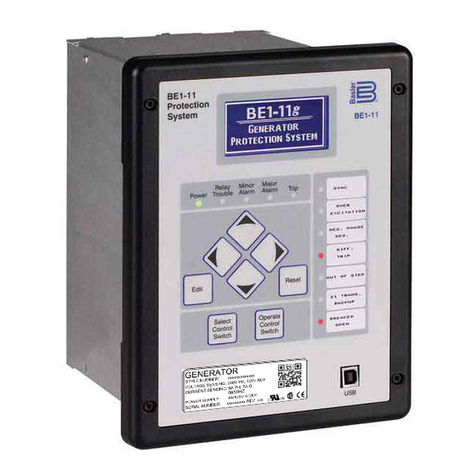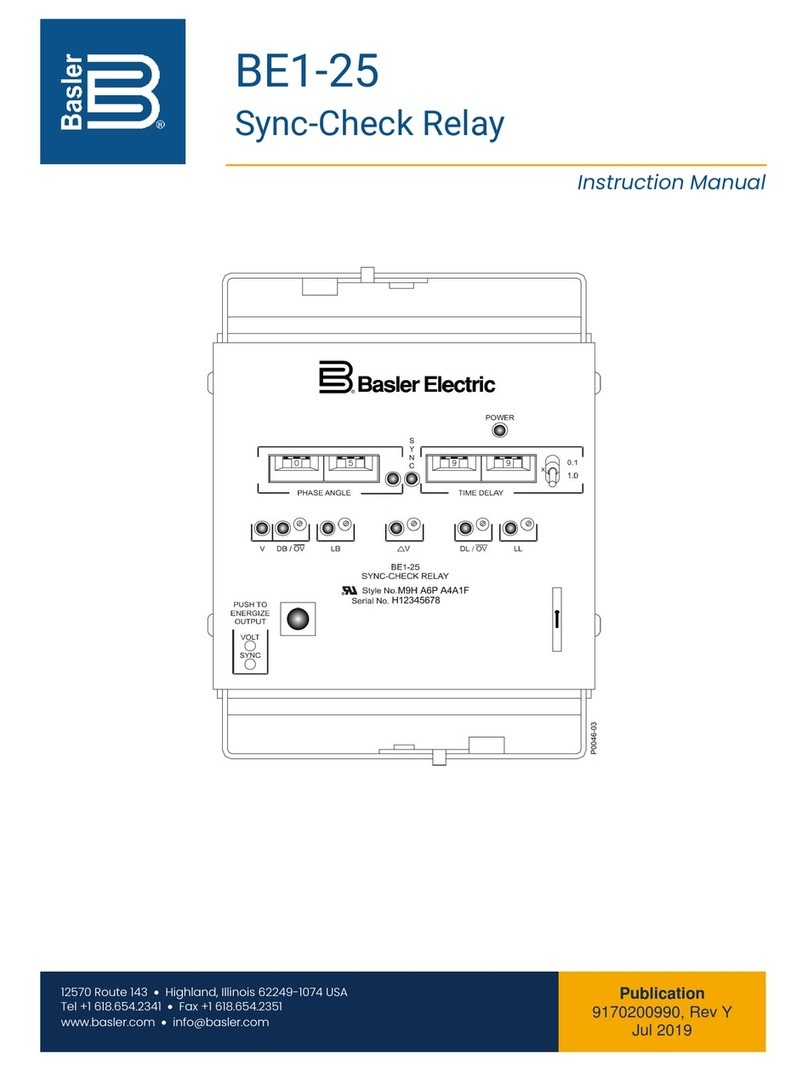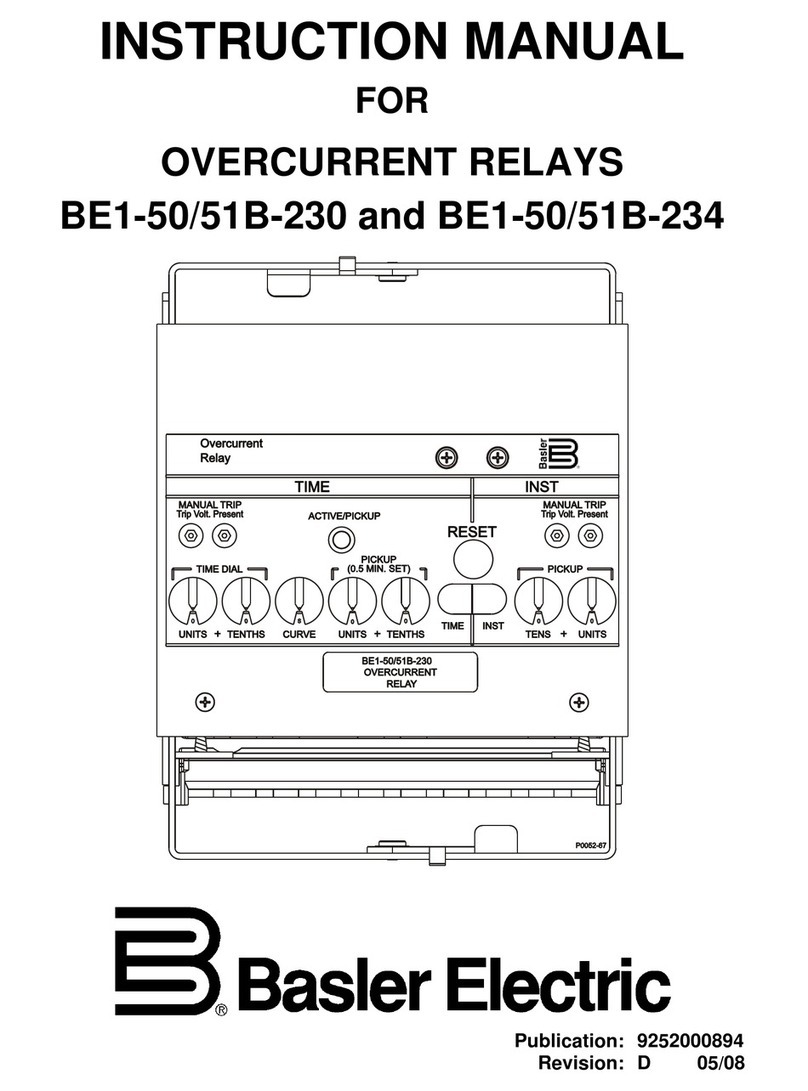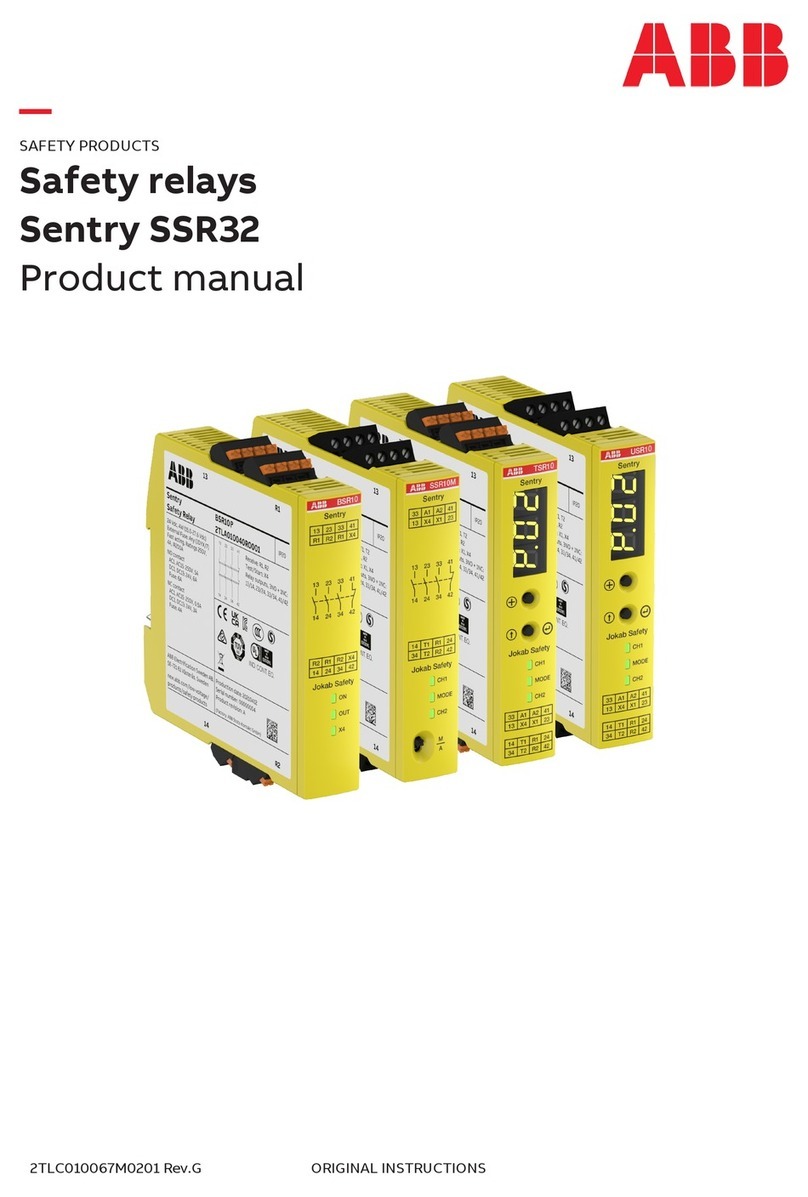
BE1-59N General Information 1-1
SECTION 1 • GENERAL INFORMATION
DESCRIPTION
The available fault current for single-phase-to-ground faults is very limited for ungrounded systems and
systems which are grounded through a high resistance. This current limiting reduces the possibility of
extensive equipment damage, and eliminates the need for a neutral breaker by reducing the fault current
below the level required to sustain an arc. But, it remains important to detect and isolate single-phase-to-
ground faults in order to prevent their evolution into more dangerous faults such as phase-to-phase-to-
ground and three-phase-to-ground faults. Sensitive voltage relays can be used to detect ground faults
where the fault currentis very small. The BE1-59N Ground Fault Overvoltage Relay is especially suited to
this task.
HIGH RESISTANCE GROUNDING
Acommonmethodofgroundingan acgeneratoristoconnectadistributiontransformerbetweentheneutral
of thegenerator and the station ground. The distribution transformer's primary voltage rating is equal to, or
greater than, the generator's rated line-to-neutral voltage. The distribution transformer secondary is rated
at 200/240 Vac or 100/120 Vac, and a resistor is connected across the secondary winding. When reflected
through the transformer, the resistor is effectively a high resistance.
Rp= Rsx N2
where Rpis the effective primary resistance
Rsis the actual value of the secondary resistor
N is the turns ratio of the distribution transformer
Available single-phase-to-ground fault current at the generator terminals is greatly reduced by the high
effective resistance of the distribution transformer and secondary resistor. The distribution transformer
provides isolation for the protection scheme and reduces the voltage to a convenient level.
The BE1-59N Ground Fault Overvoltage Relay is connected across the secondary resistor to detect the
increase in voltage across the distribution transformer caused by a ground fault in the generator stator
windings. A ground fault at the generator terminals will result in rated line-to-neutral voltage across the
transformerprimary,while ground faultsnear the neutralwillresultin lower voltages. Theovervoltagerelay
setpoint must be higher than any neutral voltage caused by normal unbalances in order to avoid nuisance
trips. This will allow a certain percentage of the stator windings to go unprotected by the overvoltage relay.
The overvoltage relay function typically protects 90 to 95% of the generator stator windings.
The BE1-59N Ground Fault Overvoltage Relay monitors the fundamental frequency (50 or 60 Hz) voltage
which accompanies a ground fault, but is insensitive to the third harmonic voltage present during normal
operation. One hundred percent protection of the generator stator windings is obtainable with the optional
overlapping undervoltageelement. The under voltage element is tunedto thethird harmonic voltage which
ispresentinthegeneratorneutralundernormalconditions. Theundervoltageelementdetectsthereduction
of the normal third harmonic voltage which accompanies a ground fault near the neutral point of the
generator.
An undervoltage inhibit feature is included with the third harmonic undervoltage element. This feature
supervises the operation of the ground fault relay to prevent operation during startup and shutdown by
monitoring the generator terminal voltage.
UNGROUNDED SYSTEMS
The BE1-59N Ground FaultOvervoltage Relay is used to detect ground faults onungrounded three-phase-
three-wire systems. The relay is connected as shown inFigure1-1. Asetof voltagetransformersare wired
with a grounded wye primary and a broken delta secondary. The BEl-59N is connected across the broken
delta. It is often necessary to connect a resistor across the broken delta to avoid ferroresonance.
Groundedwye/brokendeltavoltagetransformersactasazerosequencefiltersbysummingthethreephase
voltages. Undernormalconditionsthissumiszero. Whenagroundfaultoccurs,theBE1-59NGroundFault
Overvoltage Relay will detect the presence of the secondary zero sequence voltage (3VO).
